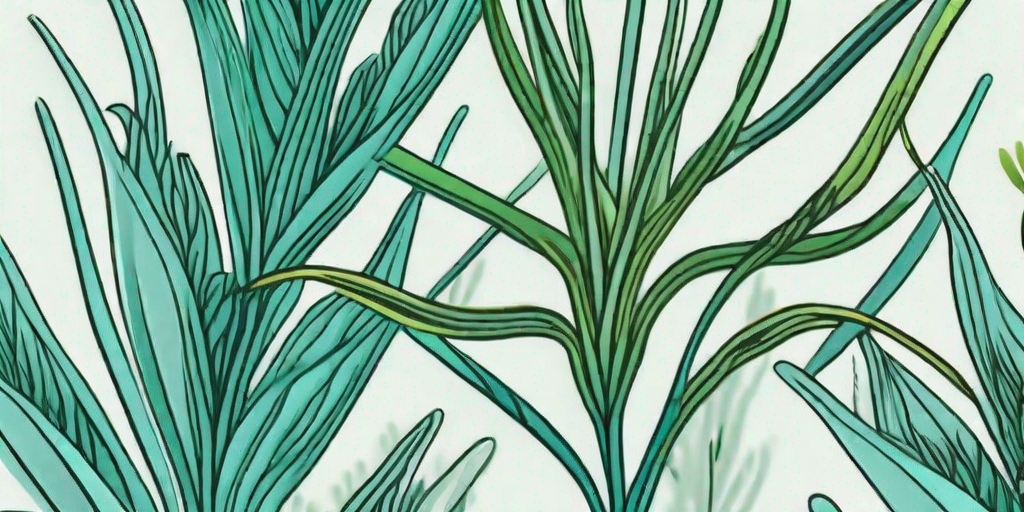
Welcome, green thumbs and garden enthusiasts! Today, we're diving into the world of the Kangaroo Paw, a plant that's as quirky and unique as its name suggests. This Australian native is known for its vibrant colors and distinctive, paw-like flowers, hence the name. But there's more to this plant than meets the eye. So, put on your gardening gloves, grab your trowel, and let's get digging!
The Basics of Kangaroo Paw
Before we delve into the nitty-gritty of Kangaroo Paw cultivation, let's get acquainted with the basics. The Kangaroo Paw, scientifically known as Anigozanthos, is a genus of 11 species. These plants are endemic to the southwest of Western Australia and are well-known for their unique bird-attracting flowers.
These plants are not just a pretty face, they're tough too. Kangaroo Paws are adapted to survive in harsh climates with poor, sandy or gravelly soils. They're also resistant to many pests and diseases, making them a low-maintenance choice for your garden. Now, who wouldn't want a plant that's both beautiful and hardy?
Identifying Kangaroo Paw
Identifying Kangaroo Paw is a cinch, even for the most novice of gardeners. The most distinctive feature of these plants is their flowers. These blooms resemble the paw of a kangaroo, complete with 'claws'. They come in a range of colors, from the traditional red and green to yellow, pink, and even black.
The leaves of the Kangaroo Paw are also distinctive. They're long and slender, much like the leaves of a grass tree. These leaves form a clump at the base of the plant, from which the flower stems emerge. The combination of these unique features makes the Kangaroo Paw a standout in any garden.
How to Grow Kangaroo Paw
Now that we've covered the basics, let's get down to business. Growing Kangaroo Paw can be a rewarding experience, especially when you see those vibrant blooms light up your garden. Here's a step-by-step guide to help you get started.
Step 1: Choosing the Right Spot
Like a sun-loving Aussie, Kangaroo Paws thrive in full sun. They prefer well-drained soil and can tolerate dry conditions. Choose a spot in your garden that gets plenty of sunlight and has good drainage. If your soil is heavy or clay-based, consider adding some sand or gravel to improve drainage.
Remember, these plants are native to Australia, so they're used to harsh conditions. Don't pamper them too much. A little bit of tough love will help them grow strong and healthy.
Step 2: Planting
Once you've chosen the perfect spot, it's time to plant. Dig a hole that's twice as wide and deep as the root ball of your Kangaroo Paw. Place the plant in the hole, making sure the top of the root ball is level with the soil surface. Backfill the hole, firm the soil gently around the plant, and water well.
Don't forget to give your Kangaroo Paw plenty of space to grow. These plants can spread up to a meter wide, so make sure they have room to stretch their 'paws'.
Step 3: Care and Maintenance
Caring for Kangaroo Paw is relatively easy. These plants are drought-tolerant, so they don't need a lot of water. However, they do appreciate a good drink during dry periods. A deep watering once a week should be sufficient.
Pruning is also important for Kangaroo Paw. Regularly removing old flowers and leaves will encourage new growth and keep your plant looking its best. Plus, it gives you a chance to show off your green thumb to your neighbors!
Common Problems and Solutions
While Kangaroo Paws are generally low-maintenance, they can sometimes encounter a few problems. But don't worry, we've got solutions for those too!
Problem: Ink Disease
Ink disease is a common problem in Kangaroo Paws. It's caused by a fungus and results in black, inky spots on the leaves and flowers. If left untreated, it can cause the plant to die back.
The solution? Prune affected parts immediately and apply a fungicide. Also, ensure your plant has good air circulation to prevent the disease from spreading.
Problem: Snails and Slugs
Snails and slugs are the bane of many a gardener's existence, and Kangaroo Paws are no exception. These pests are attracted to the succulent leaves of the plant and can cause significant damage.
The solution? Use a snail and slug bait or trap to keep these pests at bay. Alternatively, you can go on a night-time snail hunt and remove them by hand. It's a dirty job, but someone's got to do it!
Frequently Asked Questions
Still got questions? Don't worry, we've got answers. Here are some frequently asked questions about Kangaroo Paw.
Can Kangaroo Paw be grown in pots?
Absolutely! Kangaroo Paws are great for container gardening. Just make sure you choose a pot with good drainage and use a well-draining potting mix. Also, remember to water your potted Kangaroo Paw regularly, as pots can dry out quickly.
Is Kangaroo Paw frost tolerant?
While Kangaroo Paws can tolerate a light frost, they're not fans of freezing temperatures. If you live in a frost-prone area, consider growing your Kangaroo Paw in a pot and moving it indoors during the coldest months.
When is the best time to plant Kangaroo Paw?
The best time to plant Kangaroo Paw is in the spring. This gives the plant plenty of time to establish before the hot summer months. However, if you live in a warm climate, you can plant Kangaroo Paw any time of the year.
Conclusion
There you have it, a comprehensive guide to unleashing the beauty of Kangaroo Paw in your garden. With their unique flowers and hardy nature, these plants are a fantastic addition to any garden. So, what are you waiting for? It's time to get planting!















